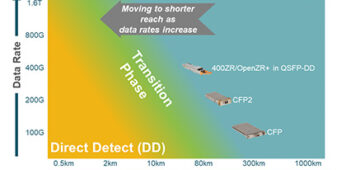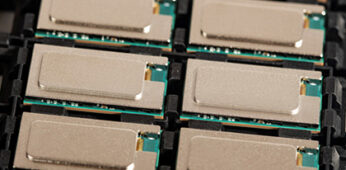Sterling Perrin, Senior Principal Analyst with Heavy Reading, recently moderated a webinar titled “Pluggable Coherent Beyond the DCI Universe,” featuring speakers from Acacia, Comcast, and Colt Technology Services. Sterling kicked off the discussion by highlighting the fast growth of 400ZR/ZR+ shipments, saying that it was most successful coherent generation of all time based on their speed and uptake. The other speakers joined him to discuss the expanding use cases for the various 400G pluggable form factors, citing real-world applications of 100G, 200G and 400G coherent pluggable modules in networks today. From each presentation, it was clear that these modules have become an important part of networks and will continue to be in the future due to their interoperability and benefits in cost, performance, reliability, and operational simplicity.
Below is a recap of each speaker’s presentation. You can also watch the replay by registering at this link.
400ZR Evolution: Not Just for DCI Use Cases Anymore
Sterling explained how 400ZR is a specific technology standard and implementation agreement that was defined by OIF after many years in the making. The key goals were interoperability and reducing power, size and cost in order to fit coherent optics inside client-sized routers and switches. Initial buyers were the large hyperscalers, which was key for driving volume. However, the technology has quickly evolved to also address the requirements of communication service providers (CSPs) who have much broader needs beyond point-to-point connectivity.
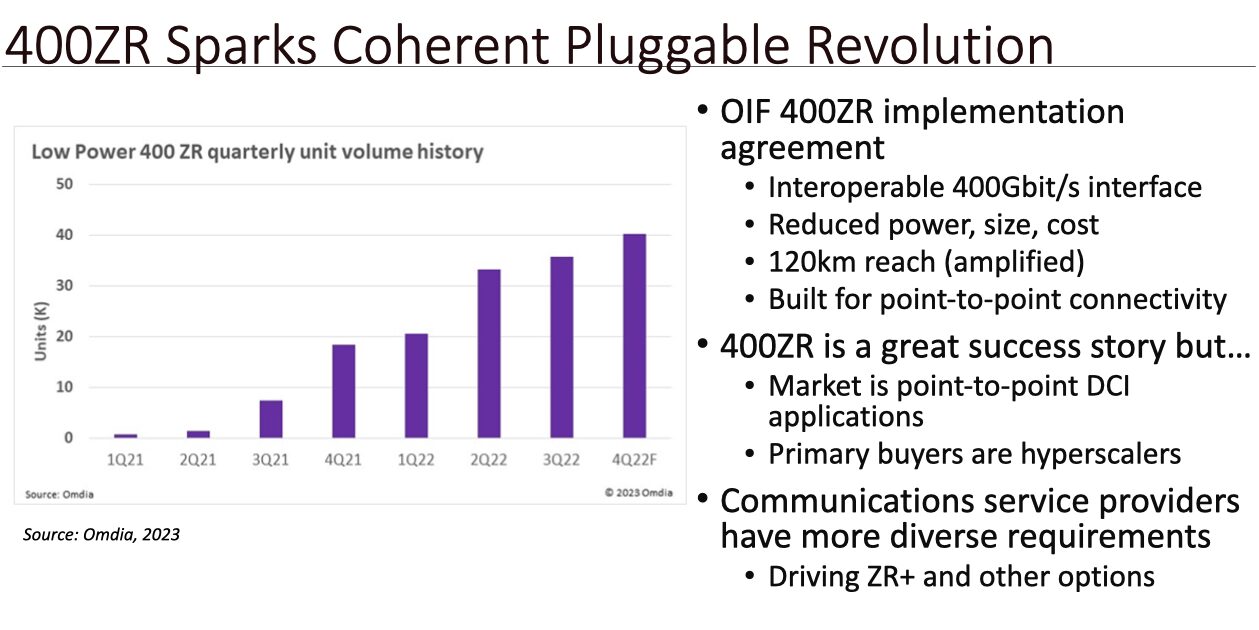
400G Pluggables Leverage the Same Component Technology Across Many Applications
Looking back to the original DCI use case, Tom Williams, Sr. Director of Marketing for Acacia, recounted how the industry was able to capitalize on an opportunity to bring the power of coherent into the same form factor as client optics. The key was finding the “sweet” spot in terms of the performance needed to cover a large number of applications. “Fortunately, the work on standardization was started early enough so vendors could start developing them and hit the market at just the right time,” he said.
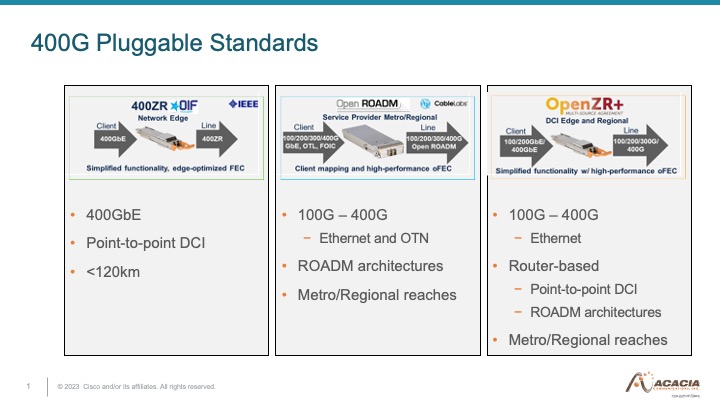
As a result, today we are seeing 400G pluggables being used across a wide range of applications, leveraging the same component technology throughout each form factor. This has allowed coherent pluggables to expand from the original DCI use case and into service provider networks such as point-to-point, ROADM, campus, enterprise, and even space.

400G Pluggables are Powering Comcast’s Core and Access Networks
Venk Mutalik, Fellow at Comcast, started his presentation by giving a brief overview of the Comcast network. While they have a very large core metro footprint, their access network has 3X the fiber mileage compared to the core, making it a very rich fiber environment. Today, 400G pluggables are in the core and the metro and they expect them to become even more important in the future.

For Comcast’s access network, they view this as converged platform that can handle both business and residential services. It is the 100G Bi-Directional CFP-2 pluggable modules that are enabling Comcast to use the access footprint to provide these combined services on one single fiber.
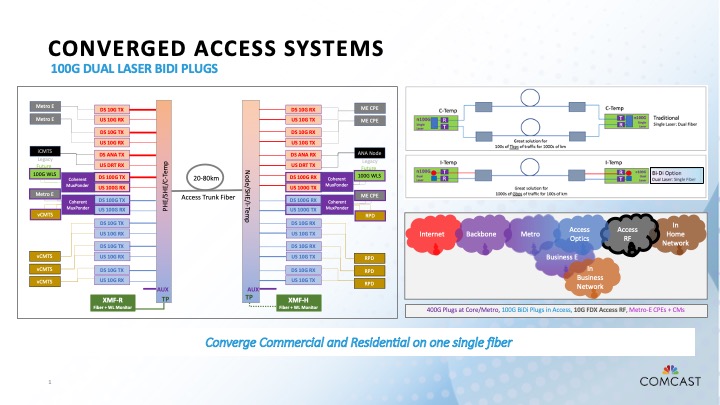
Venk explained how Comcast has been able to launch coherent optics in the access domain and it’s been very successful in multiple divisions. “As pluggables become more pervasive, Comcast needs optics to be pluggable, with a good mixture of 100G, 400G, Bi-Di, 400ZR+ and 0dBm pluggable modules,” he said. “Performance, power dissipation, and software automation will continue to be very important, and routers will also need to address the speed and latency requirements.” According to Venk, Comcast is excited about pluggables and is thankful the industry has gotten them to the point where they enable the system to be simpler and more reliable.
Colt Sees 69% Capex Savings and 2X Reduction in Rack Space and Power Consumption
According to Bart Janssens, Senior Specialist Packet Network Architect at Colt Technology Services, 400G pluggables have become a vital piece of Colt’s next-generation packet networks. The company is a business-only infrastructure provider and when they look at their customer requirements, the main trend they see is the need to consume traditional cloud services on demand without limitations on the bandwidth they are consuming between end points.

To meet these needs for performance and flexibility, Colt moved the traditional Provider/Provider Edge (P/PE) to the edge and then looked for the right technology to put at the center of its core. The solution they chose was Cisco’s Silicon One 8201, which gave them many QSFP-DD ports for 400G coherent pluggables. That allowed Colt to use a fraction of the rack space and power consumption at a much lower cost to build 35.4X more capacity per 1RU. This resulted in a core network using IPoDWDM 400G ZR+ between core routers. Colt then added the same layer in the metro, allowing them to aggregate 100G and 400G to the key data centers using 400G ER1/ZR (Acacia’s Bright 400ZR+)/LR4 DCI. And this year, they expect to extend this concept further to access routers moving to 400G.
According to Bart, 400G pluggables are driving growth in the future expansion they are doing, and he detailed some real-world use cases in Europe using LR, LR4 and ZR+. Colt has been able to improve their core transport costs by 69 percent capex, while at the same time helping the environment by removing rack space and power consumption by double digits. As Bart said in his closing remarks “What is really amazing is the transition of capex spending. While in the past, the initial spend was on expensive routers, it’s the opposite today. We can just plug in more pluggables and scale our network to meet the never-ending customer growth.”
Watch the replay
Click here to register for the webinar which will give you access to the replay. You can read more about Acacia’s coherent pluggable portfolio here. If you have any follow-up questions for any of the panelists, please feel free to reach out to us via this contact form.

